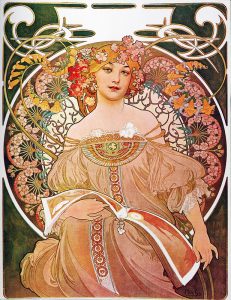A Journey Rooted in Art and Innovation
Born in 1977, Zach Lieberman grew up just outside of Chicago, where his early fascination with both art and technology began to take shape. This dual passion guided him to pursue a B.A. in Fine Arts from Hunter College, followed by a B.F.A. and an M.F.A. in Design and Technology from Parsons School of Design. These formative years were instrumental in blending his artistic vision with technological prowess, laying the groundwork for his future endeavors.
Lieberman’s career is marked by a series of prestigious exhibitions worldwide. Notable among these are Ars Electronica, Futuresonic, CeBIT, and the Off Festival. One particularly memorable project was “Messa Di Voce,” an interactive audiovisual performance in collaboration with Golan Levin. This project epitomizes how Lieberman’s work consistently pushes the boundaries of audience engagement through innovative use of technology.
The synergy between art and technology is a defining characteristic of Lieberman’s work, evidenced by his numerous exhibitions and projects. His ability to integrate these fields not only enhances the viewer’s experience but also establishes him as a pioneer in the creative coding landscape.
Zach Lieberman: The Genesis of openFrameworks
The creation of openFrameworks stands as a testament to Lieberman’s dedication to democratizing technology for creative use. This open-source C++ library was developed in collaboration with Theo Watson and Arturo Castro. Their collective vision was to build a tool that was both accessible and user-friendly, aimed at empowering artists and developers to explore the creative potential of coding.
Since its inception, openFrameworks has blossomed into a vibrant, global community. The platform’s continuous evolution is driven by contributions from countless artists and technologists, reflecting its foundational ethos of collaboration and open exchange. This community-centric approach has enabled a diverse range of creative projects, expanding the horizons of what can be achieved through technology.
Lieberman’s involvement with openFrameworks not only highlights his technical acumen but also his commitment to fostering a collaborative environment. This project underscores his belief in the power of shared knowledge and the importance of accessible tools in advancing the arts.
Nurturing Innovation Through Residencies and Education
Residencies have played a pivotal role in Lieberman’s career, providing him with unique opportunities to experiment and collaborate. His time at institutions like Ars Electronica Futurelab, Eyebeam, Dance Theater Workshop, and the Hangar Center for the Arts in Barcelona were particularly transformative. These experiences allowed him to push the boundaries of his practice and develop innovative projects alongside other leading artists and technologists.
In 2013, Zach Lieberman co-founded the School for Poetic Computation (SFPC) in New York City. This hybrid space functions as a school, residency, and research group, exploring the intersection of code, design, and art with a focus on poetic expression. SFPC offers intensive, seminar-style sessions where students experiment with electricity, code, and theory, fostering an environment of creative exploration.
Lieberman’s role as an educator extends to teaching graphics programming at Parsons School of Design and serving as an adjunct associate professor at the MIT Media Lab. Through these positions, he inspires the next generation of artists and technologists to explore the poetic possibilities of technology, ensuring that his influence and insights continue to shape the field.
Zach Lieberman: Exploring the Invisible
Lieberman’s work often traverses the boundaries between the visible and invisible, using technology in playful and thought-provoking ways. His “Daily Sketches” project, initiated in 2016, exemplifies this approach. These abstract animations, created through custom software, surprise and engage viewers by bringing the unseen into the realm of perception.
Recognition of Lieberman’s innovative contributions includes prestigious awards and distinctions. The Golden Nica in Interactive Art for the Eyewriter project in 2010 is a standout, honoring his efforts in developing a tool that allows individuals with paralysis to draw using their eyes. Similarly, being named one of Fast Company’s “100 Most Creative People in Business” in 2010 underscores the broader impact of his work on the creative industry.
Lieberman’s recent solo exhibition, “Future Sketches” at ARTECHOUSE DC, further illustrates his exploration of technological play. This exhibit showcased installations like “Manual Input Sessions” and “Re-Coded,” highlighting the iterative and collaborative nature of his practice. By featuring work from his students and other artists, “Future Sketches” underscored the communal and evolving aspect of Lieberman’s artistic journey.




